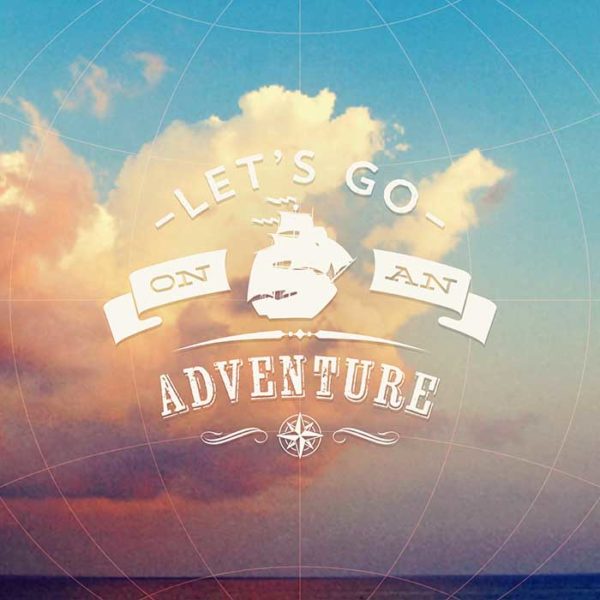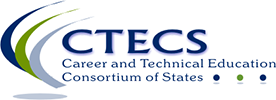Summary
In this activity students will use an initial design (from the Creativity Good to Go activity) based on the needs of their client, the teacher, to create a significant revision and improvement per the client’s instructions. Students will turn in a completed ad design.
Learning Objectives
Students will
- use the revision process to improve or refine ideas
- identify techniques to reuse and repurpose materials and ideas
- generate ideas.
Icebreaker
Remind students that creativity CAN be improved.
Think about describing examples of how this happens all the time in the workplace (one doesn’t have to have a “creative” type of career to experience this).
Examples: (notice below the overlap with problem solving. Creativity is the initial spark of problem solving–both recognize a problem or pattern before changing it. Creativity is really having the ability to recognize the current reality and drawing on inner resources and imagination to change it. If we think about creativity as a battery to push that change, tell students there are ways to supercharge that battery. But everyone has the battery and, therefore, the ability to charge it up.)
a. A nurse who always relied on empathizing and relating to her patients must now wear a face covering and practice social distancing. How does she counteract these regulations and provide patients with the human/emotional care they need? Ans: Many medical personnel during the pandemic started wearing enlarged pictures of their smiling faces on their clothing, just below their mask-covered faces.
b. A building planner in the city has uncovered an ancient archeological site. What can the planner do to continue the project to respect and preserve it? Redesign some of the project and use some of the elements uncovered in the new site plan.
c. A marketing manager has been told that the company no longer wants to be associated with an old logo and the company wants to modernize its image. What steps can the marketing manager take?
OR use the Pre-Activity Process Questions to start a quiz or discussion.
Pre-Activity Process Questions
- How do you learn to become more creative? What do you do to support your own creativity?
- What is the connection between creating and revising?
- Why is creativity valued by just about every workplace?
- What are some new and creative products or innovative technologies available to consumers?
- How do you use revision of ideas in your daily life?
Instructional Steps
(what the instructor does)
Assignment Overview
One of the best ways to improve your creative idea is to revisit and change something from that original idea. Tell students to think of their advertisement they completed for the travel company in the Creativity: Good to Go activity. They will now significantly alter that advertisement to come up with something entirely new. It might even mean starting over, but they should try to keep the best elements from their original design and build upon them to give the client what they want.
Explain: Revision is Creativity Refined
Even the most creative minds need a rational side to think critically about their initial ideas and creations. They are driven to make their ideas better and they are not typically satisfied with the first draft. It’s this critical side of them that allows ideas to deepen and improve. This process is called revision. In the workplace, when ideas are actual products or services are improved upon, it is called innovation. While obvious examples abound in technology, because it seems advances are coming all the time in consumer electronics such as smart phones, there are plenty of new inventions everywhere. The health of the economy depends on new, good ideas. The people with good ideas are valuable no matter where they work. But the people who make those ideas better or support that idea and bring it to consumers are just as valuable. It’s one thing to have an idea. It’s another to express it effectively.
Today, we will change our creative hats and be that support person who makes your idea better and who gives your client what they’ve always wanted, even if they never really know what it was.
Discussion
Have your students supply a list of revisions or innovations. Examples:
- Smart phones from rotary phones to handheld landlines to full computers in your hand, and all the apps on them
- Subscription and consumer services apps: Netflix (biggest entertainment company sells no movie tickets—Blockbuster anyone?), Amazon (biggest retailer has no shopping malls), Spotify, Uber, Grub Hub, etc.
- Electric cars from gas guzzlers to hybrids to Tesla
- Biotechnology and medical advances
- Artificial intelligence
- Robotics
- Digital printers
- Fracking (pros and cons)
Many innovations also have a down-side. Something is replaced.
The idea is the vision, but it’s the re-vision that makes the idea pop. Just as with getting new ideas in the first place, improving or revising those ideas is a muscle that needs to be exercised to strengthen. It is built by repetition and yet it depends on new and different approaches. Fresh thinking, we say. Often ideas need translators, storytellers, salespeople, and a huge amount of courage, patience, resilience, determination and confidence before they ever make it to a larger audience. But every workplace benefits from creative ideas and the people who know how to support them.
Video
Students will view the video: How to Practice Effectively for Just about Anything by Annie Bosler and Dan Greene. Discuss the main points of this video. Ask: What is the relationship between creativity, revision/practice, and improvement?
Assignment
Refer back to the artifact you created for the previous activity: Creativity: Good to Go. Most of you used resources to create an image for a travel company. The client now wants you to design something based on your original design. This time they want something for a small but growing part of their larger business: Adventure Travel. Adventure travel is defined as: a type of tourism involving travel to remote or exotic locations in order to take part in physically challenging outdoor activities.
The client (teacher, you) also wants the students to focus on an aspect of environmentalism, which could come in the form of reuse, recycle, repurpose, or be about the location itself, connecting people to nature. Students should be asked to work into the final ad the value of preserving the environment.
No matter what students created before, they should try to keep the best elements and alter it to revise and improve their original message to meet the client’s needs. This helps them connect creativity and innovation.
Artifact
(what the students produce to indicate completion)
- Design upload
Differentiation method:
(to address learning styles and disabilities)
- Have students present a summary about the video.
- Students may work in a variety of media and may mix media using cutouts from magazines in montage
- If grouped into teams, tasks might be delegated in the final design: text, image, research, resources, production, pitch the idea and improvements to the client. But students should consider all of the previous group members’ advertising designs from the Take a Look activity.
Evaluation Method
Post-Activity Process Questions
- How did you use an element from you original design in your final design?
- How did you address the environmental aspect of the client’s requirements in your design?
- How would you change your design if you were given enough time and resources?
- Are you a creative person, one who supports and improves ideas, or some of both? Explain your answer.
- List a few careers in which creativity plays a major role.
Vocabulary
Students can complete the following as exercises on Quizlet: https://quizlet.com/_8m5jdt?x=1jqt&i=wcwth
- Adapting, to change in order to adjust to a new problem, condition, or environment
- Conservationism, the preservation and careful management of the environment and of natural resources
- Constructive criticism, criticism that is presented in a way that can help you learn and grow
- Draft, a sketch or attempt that will be improved for a final product
- Environmentalism, a social movement dedicated to protecting the natural world
- Expression, the process of putting one’s thoughts or feelings into the world
- First draft, first, rough version
- Innovation, an improvement of an existing technological product, system, or method of doing something
- Media (singular: medium), various methods for communicating information
- Myelin, a fatty substance that helps insulate neurons and speeds the transmission of nerve impulses (enables muscle memory) and can be grown through practice and repetition
- Potential, possible, able to happen; something that can develop or become a reality
- Practice, to learn by repetition
- Recycle, the process of making new products from materials that were used in another product
- Repurpose, to convert a resource or medium for use into another format or product
- Reuse, to use a resource again
- Revision, the act of rewriting something or going back to an original creation and re-creating it


